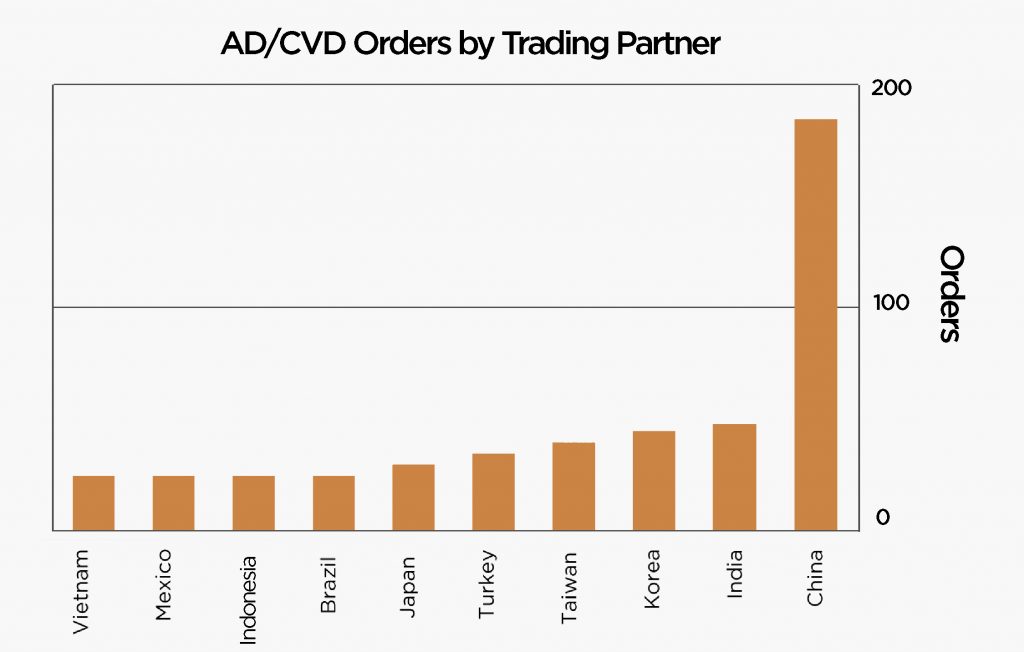ANTI-DUMPING LAWS AND BRAND PROTECTION
WHY READ THIS ARTICLE?
As someone who has poured countless time, emotion, and money into building and maintaining a brand, you want to know all the tools available to protect it. For that reason, we delve into the World Trade Organization (WTO)’s “Anti-Dumping Agreement,” as well as the U.S. Tariff Act of 1930 (“Tariff Act”) to identify how understanding these laws may be of use to you when traditional IP protections are not an option. After all, it never hurts to add an extra tool to your brand protection toolbox.
WHAT IS “DUMPING”?
Also known as “trade dumping,” dumping is a predatory pricing technique companies may use to obtain a competitive advantage in importing markets by flooding a market with massive volumes of their merchandise (WTO). Economic injury may occur when an exporting company “dumps” product into a foreign market by selling at a price significantly lower than the fair market price of the exporting country, or at a price below its cost of production (Office of the United States Trade Representative). In the United States, anti-dumping legislation exists in the form of the Tariff Act. The Tariff Act provides that “countervailing duties” may be imposed, as a remedy, upon merchandise imported into the United States, causing or threatening to cause, material injury to an industry (19 U.S.C. § 1671(a)). It is not quite as easy as issuing a fine, however. In order to impose countervailing duties, the U.S. Department of Commerce and the United States International Trade Commission (USITC) must determine that the government or a public entity of the exporting country is providing a subsidy to the firm who manufactures or produces the merchandise for sale into the United States (19 U.S.C. § 1671(a)). The Tariff Act additionally allows for anti-dumping duties to be imposed, which work very similarly to the “countervailing duties,” only without the requirement of foreign subsidization (19 U.S.C. § 1673). The WTO’s “General Agreement on Tariffs and Trade 1994” employs similar principles on a global scale, affecting all WTO members. The WTO focuses on how individual governments “can or cannot react to dumping – it disciplines anti-dumping actions” (WTO). Both anti-dumping duties and countervailing duties are essentially tariffs imposed on the exporting market to mitigate the price discrepancy.

WHERE IS THE CONNECTION TO BRAND PROTECTION?
While anti-dumping laws are utilized on an industry scale rather than a brand-specific scale, brand owners should recognize the relationship between the health of an industry and the health of a single brand. Generally, a brand gains strength and prestige through consumer preference within a given industry. Brand owners compete for the biggest piece of the pie: competitive advantage in their specific industry. When trade dumping occurs, it has the potential to damage brands by significantly undercutting the prices of like merchandise.
For a company to be able use anti-dumping laws to prevent further injury to an industry, it must first petition the government for relief. (USITC). The USITC must determine that the imported goods amount to more than 3% “of all such merchandise imported into the United States in the most recent 12-month period preceding the filing of the petition.” (USITC). Upon an affirmative finding of injury to an industry and through collaboration with the United States Department of Commerce, the Secretary of Commerce may issue an antidumping order, or an order for a countervailing duty, which US Customs and Border Protection can then enforce. (USITC).
ANTI-DUMPING LAWS IN ACTION
In 2017, four chemical companies in Japan requested a duty be imposed on Chinese imports of polymer resin used in polyethylene terephthalate (PET) bottles. The Japanese government approved the provisional duty and, if the decision is finalized, it could be revised by the WTO, which would allow Japan to keep the duty in place for up to 5 years. A government report indicated that the Chinese imports of the polymer resin accounted for over 55% of the country’s total imports (The Straits Times, 2017).
Brand owners have a unique viewpoint on their industries. These anti-dumping duties begin with companies who are concerned about the livelihood of their brands in certain territories and how to protect market share. The health of the brand is the foundation of brand protection and examining damage from various forces can lead to solutions in possibly unexpected places. If you are a brand owner in an industry that has been damaged by trade dumping, consider engaging in additional research on how anti-dumping laws may be of use to you.
THE BRAND PROTECTION PROFESSIONAL | MARCH 2020 | VOLUME 5 NUMBER 1
COPYRIGHT 2020 MICHIGAN STATE UNIVERSITY BOARD OF TRUSTEES
